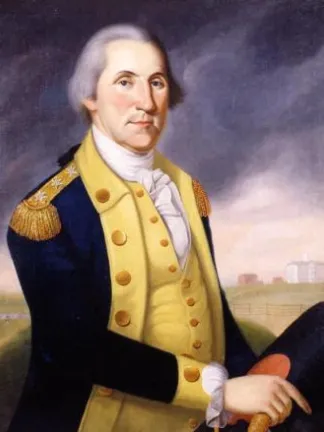This depiction of George Washington (1732–1799) as commander of the Continental army was painted in the 1790s by Charles Peale Polk, who derived the image from portraits taken from life by his more famous uncle Charles Willson Peale.
Washington was keenly aware of physical appearance and paid considerable attention to both proper dress and proper demeanor. He said, “nothing adds more to the appearance of a man than dress.” Washington concerned himself with the buttons, trimmings, and all manner of details of his uniform. He even powdered his hair to enhance the sense of dignity.
Washington was as attentive to his demeanor as to his dress. Gifted with an extraordinary personality and presence, he knew how to project those qualities and make the most of them. It was by the force of that personality that Washington held together the Continental army in the face of overwhelming odds, limited enlistments, and shortages of materials.
Somehow Washington could be both formal and warm at the same time. Abigail Adams said, “he has a dignity that forbids familiarity, mixed with an easy affability that creates love and reverence.” As a gentleman in Virginia he had learned to treat people of “low Degree,” as he put it, “with affability & Courtesie, without Arrogancy.” As a Virginia colonel, he had learned to combine benevolence with what he called “the strictest discipline” and “the strictest justice,” and so win the confidence and admiration of his men.
Washington commanded the Continental army from June 14, 1775, until December 23, 1783. He fought only nine major battles, often losing, but he held the army together until the French alliance tipped events in his favor.

